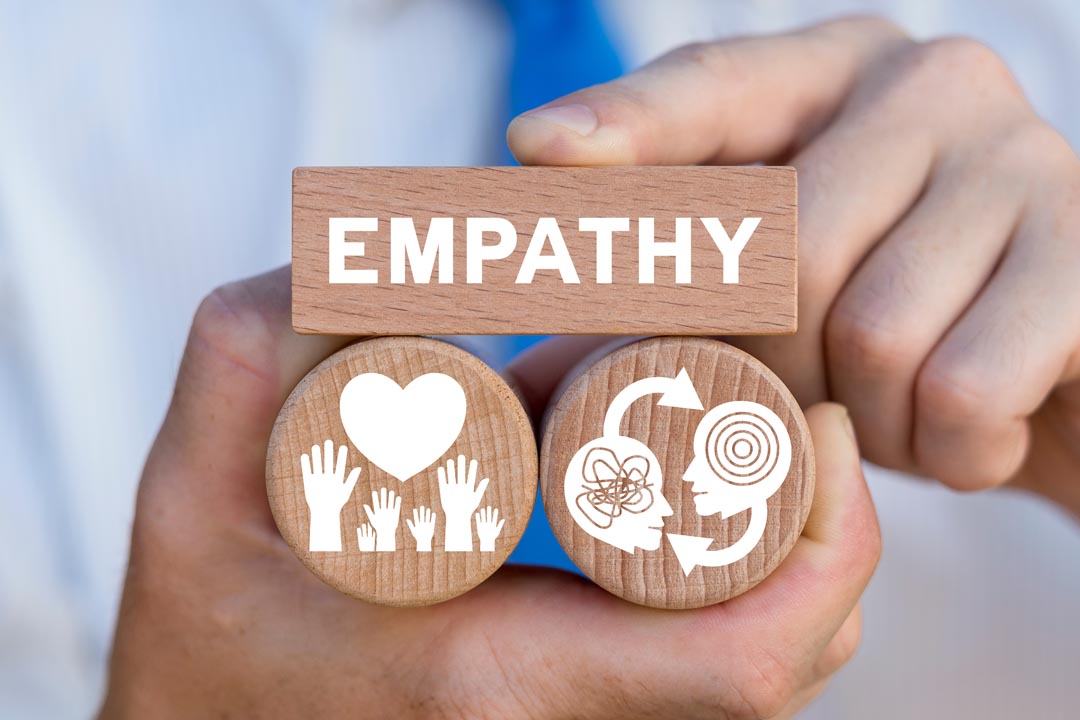The ability to relate to others is more than a nice-to-have. It’s a powerful tool for successful leadership. Alexandra Efthymiades shares the tips you need
Take a moment to think about a great boss you had in the past, or you have now. What makes them great? When we ask this question on our management development courses, the answers are often as follows:
- They listen.
- They value me.
- They support me.
- They trust me and I trust them.
- They are self-aware.
- They try to see things from different perspectives.
- They care.
- They’re interested in what goes on for people outside of work.
Are your answers like these? If they are, then part of what you appreciate about a great boss is their empathy. This means their ability to imagine the feelings, thoughts and perceptions of others; that they appreciate that people have different perspectives; and that they identify and connect to the emotional experiences of people in their team and respond appropriately.
Empathy is a trait and a skill, and it is learnable
Empathic leadership is also important in conflict situations, which are inevitable in the workplace. Empathy enables leaders to view things from multiple perspectives, and it is a prerequisite for the necessary but uncomfortable conversations that help parties in conflict understand each other and constructively manage their differences. A conflict conversation based on empathic and collaborative dialogue will differentiate an outcome that is based on greater understanding and stronger relationships to one that becomes toxic and harmful.
Leaders who approach a situation of conflict with empathy will be able to listen to team members without blame or judgment. This leads to increased understanding and connection which, in and of itself, is a restorative process.
Dr Brené Brown, renowned author and researcher into empathy, points out that humans are neurologically hardwired to be connected to one another. Empathy fuels connection. Research also shows that when we feel connected to others at work, we are happier and more productive.
Empathy is a trait and a skill, and it is learnable. Here are some practical ways you can show empathy, whether you are a leader or colleague:
Start by listening
The starting point for showing empathy is to listen more and talk less. While many of us interrupt or give advice when someone comes to us with a problem, what people usually need is to feel heard and cared about. By listening and holding space, we validate what others are saying, even if we don’t agree with it, or can’t relate to it.
When someone next comes to you to discuss a problem or challenge, be curious and interested. You can show empathy, curiosity and interest by saying:
- “Can you tell me more about that…”
- “I want to hear more about the impact this is having on you…”
- “I can hear you’re upset…”
- “It sounds like this is challenging for you…”
If you don’t have time to listen because you’re working towards an urgent deadline or about to go into a meeting, set a time to speak with the other person as quickly as possible.
Ask open questions
You can further show empathy through your willingness to give support. This is done by asking “how” you can help, which is more effective than asking “whether” you can help. Examples of this are:
- “What do you need right now?”
- “What will help you?”
- “How can I support you?”
- “What can I do to make this easier?”
Check in with people
There are times when people don’t come forward with problems, and other times when we don’t notice that people need support. This is especially the case when teams work remotely, as this makes it harder to notice that people are struggling.
Remember to regularly check in with colleagues, whether you work physically together or not. This shows you care, and it also allows you to hear about challenging situations that might lead to conflict. Examples of this include:
- “I wanted to check in to see how you are.”
- “How are things going for you?”
- “What are your biggest challenges at the moment?”
- “How are things going for the team?”
Empathy in and of itself is an essential leadership skill. The fact that it also diffuses conflict, which is inevitable in any relationship, illustrates the importance of supporting and upskilling leaders to learn and practise the skills of empathy. By role-modelling the behaviours leaders want to see in their teams, empathic leadership paves the way for healthier relationships at work. This will result in more connected, engaged and productive teams.
When it comes to empathic leadership, remember to be the leader you wish you had.
Alexandra Efthymiades is Co-Founder and Director at Consensio



